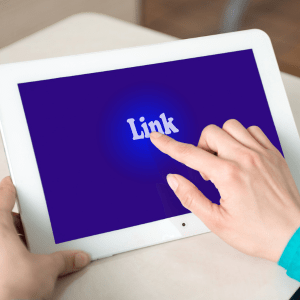If you work in the Digital PR industry, it’s highly likely that you’ve experienced this emotional rollercoaster before: getting excited to see your campaign land in the press, before noticing it only includes a brand mention, with no link in sight.
Whilst it’s great to see your content covered and credited, it’s understandable to want a backlink to your website as well.
In cases like these, it’s best to apply the mantra: if you don’t ask, you don’t get.
Remember, the journalist covering your story has clearly seen something of value to offer to their readers. So, this should stand you in good stead when making that all-important link request.
What is an unlinked brand mention?
An unlinked brand mention is when a publication mentions your brand by name, but does not include a hyperlink back to your website.
A hyperlink would most commonly be inserted in the brand name or to a spokesperson mentioned in the feature.
Once you spot an unlinked brand mention, you can email the journalist, or contact the website, to request that a backlink is inserted to your website.
How can I turn brand mentions into links?
To convert brand mentions into links, there are a number of steps you can take:
- Make a list of articles which feature just brand mentions
Search for your brand name, and any relevant spokespersons, in Google News to find articles which do not include backlinks to your website.
To help with this process, it’s always a wise idea to set up alerts for your brand name and spokespersons. My go-to is Google alerts but firm favourites around the Cedarwood Digital office also include Talkwalker, Ahrefs and Semrush.
- Source the journalist’s contact information
Aim to contact the article’s author when requesting a backlink. You can find their contact details listed on media databases, such as Roxhill, Vuelio or Muck Rack. Other means of sourcing their email include their article author page or their social media profiles i.e. X (formerly known as Twitter) and LinkedIn.
If you’re unable to find the journalist’s email, it’s still worth contacting another journalist on their team. Alternatively, you could email an editor or corrections desk at the publication, or opt for a general, editorial contact email address.
Online tools, such as Hunter.io, can also help you to find missing email addresses from any company name or website.
- Craft your backlink request email
From the offset, it’s always good manners to thank the journalist for covering your story, or for including quotes from one of your spokespersons.
This shows that you appreciate your professional relationship with them, and also allows you to insert a link to the article you’re referencing, so that the journalist can quickly access this.
Politely request if they could insert a link to your website as a form of accreditation. This will have the best chance of success if there is an incentive for including the link. For instance:
- ➡️ Do you have a data hub with further statistics readers could be interested in?
- ➡️ Does your blog contain further visuals to help readers understand the story?
- ➡️ Does your spokesperson’s author profile provide further credibility for expert opinion pieces? (this is particularly important in the legal and financial industries)
Clearly signpost the URL that you would like the journalist to link back to, invite them to provide feedback on what you have proposed, and thank them for their time.
Hopefully, you will receive a response that they have inserted a link into the article. Otherwise, you can still gain valuable feedback from a ‘no’, such as learning if a particular publication has a ‘no link’ policy or if they require an exclusive to feature a backlink.
Five tips to convert your brand mentions into links:
- ➡️ Keep your finger on the pulse: Try to request a link for a brand mention as soon as possible. The closer to the time of publication, the higher the incentive the journalist should have to insert a link. They are less likely to insert a link to an older article over one which is newly released.
- ➡️ Research best sending schedules: Media databases often detail at what time of day journalists prefer to hear from PR’s. If you can, send your email within this time frame as they may be more likely to spot it.
- ➡️ Give them a good reason: Don’t expect journalists to insert a link to your website if you’ve not highlighted the added value this would provide to their readers. Be sure to showcase any additional data or visuals you have to accompany the story, as well as your spokesperson’s credentials.
- ➡️ Send your request in a follow-up to your campaign pitch: If you have recently sent your campaign, and it has been published in a quick turnaround, it’s worth sending your request as a follow-up to your original pitch. This highlights the existing relationship and will appear less like a cold email.
- ➡️ Limit follow-ups: If you haven’t heard anything back, it’s worth following up in case your email has been lost amongst hundreds of other emails. However, keep this to just one follow up; to maintain good relationships with journalists, it’s important to not be too persistent when chasing a link.
If you need help reclaiming unlinked brand mentions, or building links for your brand, contact us here.









